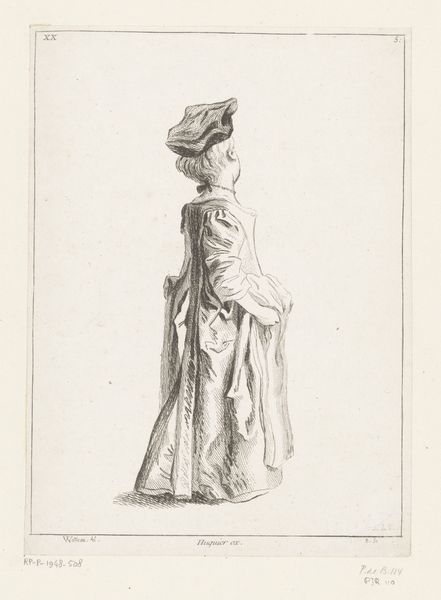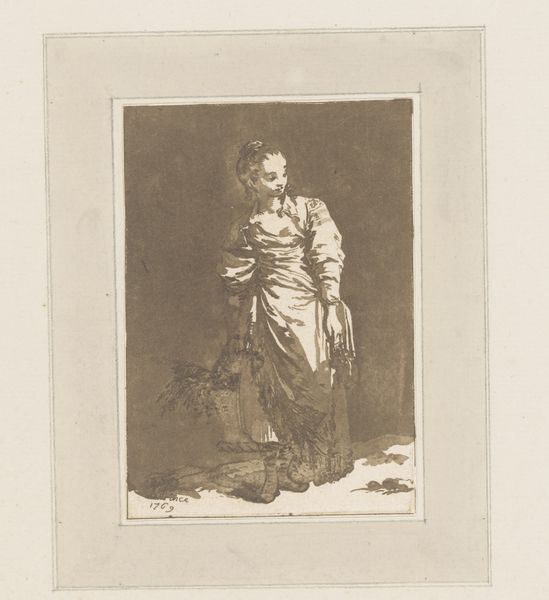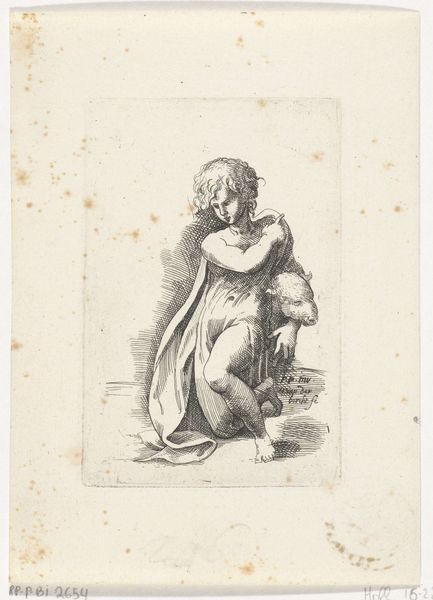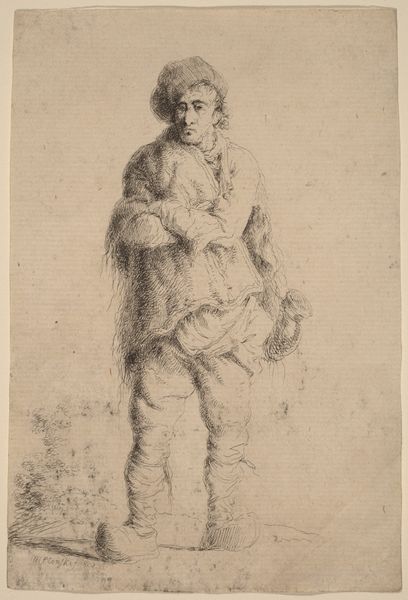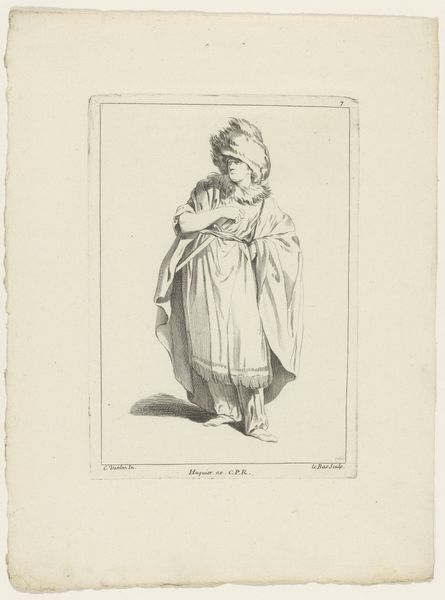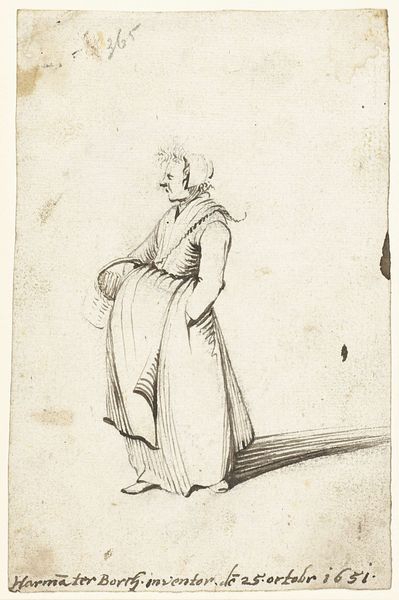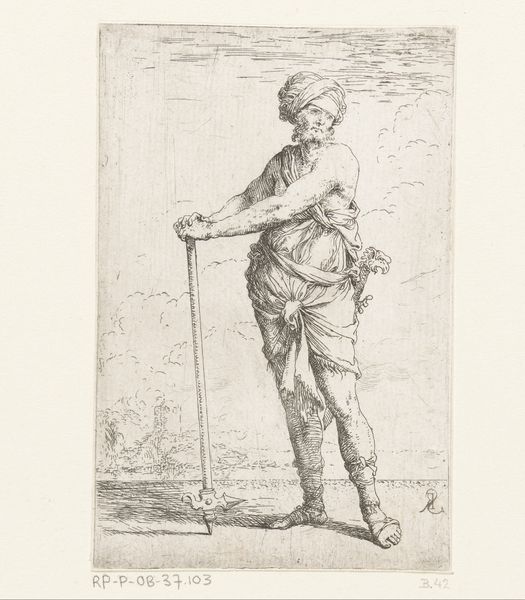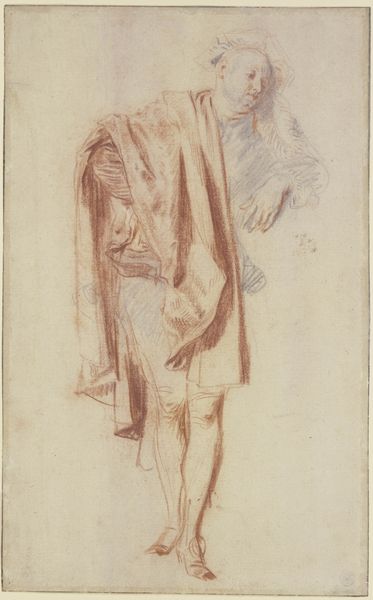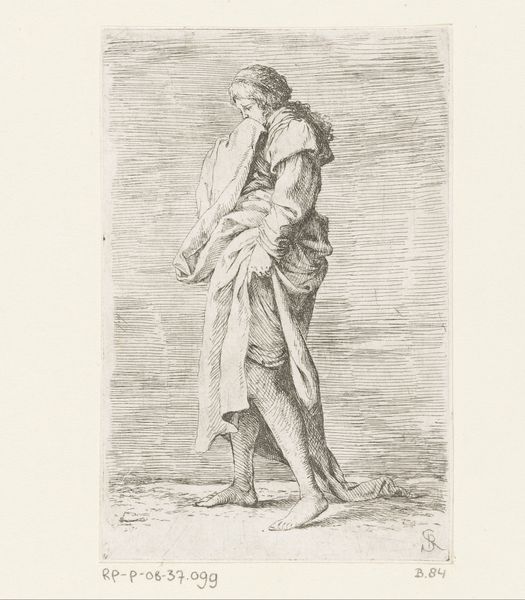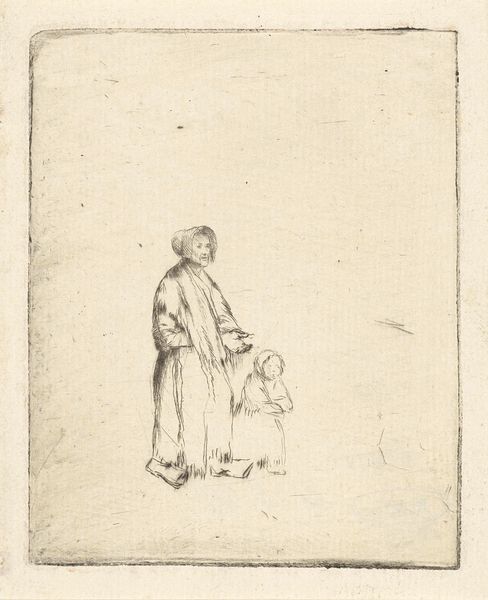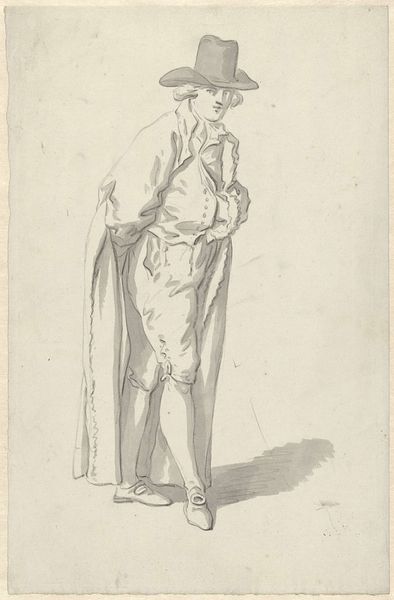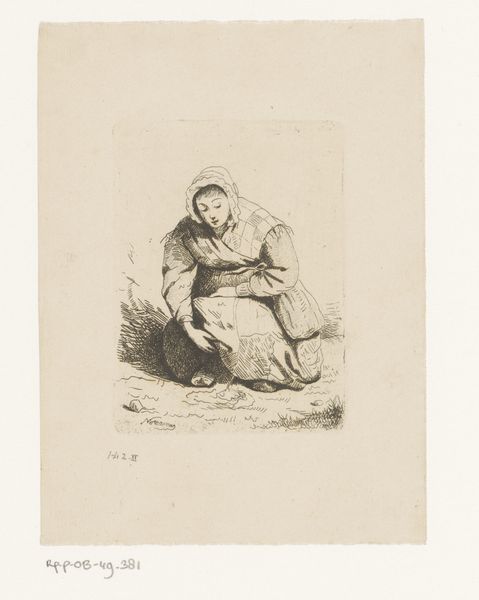
print, etching
#
portrait
#
baroque
# print
#
etching
#
pencil sketch
#
old engraving style
#
figuration
#
pencil work
Dimensions: height 144 mm, width 95 mm
Copyright: Rijks Museum: Open Domain
Editor: We’re looking at "Lopende vrouw," or "Walking Woman," an etching by Salvator Rosa, dating from around 1656-1657. There's something both vulnerable and defiant about this woman, even in its small scale and minimal lines. How do you interpret this work? Curator: What strikes me is how Rosa captures the complexities of representing women in 17th-century art. Is she a figure of the working class? The loose clothing suggests a certain lack of adornment, while the bare feet signify labor and connection to the earth. The gaze directed to the side makes one wonder, to whom or what is she pointing? Is she claiming agency? Is she accusing someone of something? Editor: That's fascinating, I was focused on her averted gaze as a sign of passivity, or perhaps, contemplation. But thinking of her agency, the pointing takes on a whole new significance! Curator: Exactly! We must consider the socio-political landscape. Rosa was operating in a patriarchal society where representations of women were often carefully controlled. By imbuing this "walking woman" with such a gaze, such a directive gesture, Rosa perhaps challenges those norms. The piece invites questions about class, labor, and the limited power afforded to women. The art serves as social commentary. What does this tell us about the experience of women at that time? Editor: So, by analyzing these subtle visual cues and understanding the societal context, we can start to unpack Rosa’s possible intentions. I think it’s changed how I view her. I definitely see the defiance you mentioned at the beginning. Curator: Absolutely. And hopefully, it also underscores the importance of considering art as more than just aesthetic objects, but rather as reflections of the complex power dynamics of their time. It’s a potent reminder to engage critically with visual culture and its influence.
Comments
No comments
Be the first to comment and join the conversation on the ultimate creative platform.
